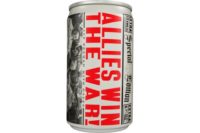The Distribution Tug-of-War
Changes in the market have distributors rethinking their systems
Direct store delivery has
long been a mainstay of beverage distribution, but shifting dynamics in the
retail world have rippled through to distributors, forcing many of them to
rethink the way they serve their customers and whether today’s
methods will work five or 10 years from now.
“Local store door delivery is very
expensive,” says Jim Morehouse, vice president at A.T. Kearney,
Chicago. “You start adding that up as part of the cost of doing
things and you start to ask, ‘What incremental benefits am I
getting?’” A.T. Kearney has asked that question and has been
studying distribution and retail in a study that is expected to be complete
later this year.
Early results indicate that many in the industry are
considering ways to update distribution to meet the needs of today’s
changing retail environment. The DSD system was created on the premise that
a manufacturer’s distributor could give products more attention and
care in the retail environment. But larger retailers believe they now have
the tools to make shelf-mix decisions, ordering and merchandising choices
on their own. Some of the largest, such as Wal-Mart, have insisted on
taking products only through their own warehouses, and even retailers that
don’t require warehouse delivery are looking at customizing their
delivery options.
“The question that’s being asked is,
‘If local delivery is very expensive, and given the retailer’s
changing needs and increasing capabilities, is there a way to reconfigure
this process that is less costly and more effective?’”
Morehouse says.
“[DSD] operating models were built years ago for
pushing product into large-box grocers,” explains Steve Riordan, vice
president, A.T. Kearney, Dallas. “Because so many things about the
world have changed since then, that traditional DSD operating model does
not necessarily fit a world where it’s more demand-driven and the
growth is coming from non-grocery channels.
“Leading retailers have gotten much more
sophisticated and capable on their own with things like forecasting and
order management.”
Riordan has put together what he calls the DNA of DSD,
decomposing the traditional elements of DSD into smaller parts.
Historically, suppliers have been unwilling to provide any subset of this
offering because it has been such a strong source of competitive advantage,
he says. However, more recently, under pressure from retailers,
suppliers have begun to consider these retailers’ requests. The
DNA of DSD includes:
Business insights — generated from
internal, customer and third-party data about consumer, customer, channel
and other topics.
Merchandise management — Merchandising decisions
and activities, including assortment planning, space planning, pricing,
promotion and planning.
Forecasting and order management — Activities
and information required to make optimal order decisions at the store
level, including demand forecasting and order capture.
Inventory management — Managing the activities,
facilities and inventory in downstream distribution to the forward-most
distribution point.
Distribution and logistics — Driver relationship
building and selling activities with key store personnel.
In-store selling — Managing the outbound
distribution fleet, including drivers, trucks and routing through to the
back room of the retail store.
In-store merchandising — In-store merchandising
activities, including managing the backroom, setting the shelf and setting
promotions.
“DSD is based on the [premise] that the
manufacturer knows better than the retailer what they should be carrying
and how much they should be carrying,” Riordan says. “But the
retailers are really flipping over to demand-based models where they not
only have great point-of-sale information, but they also have loyalty card
information about what consumers want. This DSD model that was based around
push is now being challenged by so many retailers that want to
pull.”
Riordan says these changes have been occurring outside
of direct store delivery segments for years, but that DSD’s benefits
prevented it from being affected until now. However, he says, the benefits
are not always perceived the same way by both the retailer and distributor.
“We asked both parties: ‘Which of these do
you value most?’” Riordan says. “The manufacturer places
a high value on in-store selling. They believe the manufacturer in the
store can make significant differences in their business by virtue of their
relationship with the store manager. The retailers hate that because they
feel their store manager is being manipulated out in the field and the guys
running the categories think their field guys are being overridden by the
drivers.
On the other hand... “The value of the fleet and
the drivers showing up at the store — the last mile of distribution
— the retailers and manufacturers place the same high level of value
on having that because most retailers can’t duplicate the econo-mies
of scale some of the manufacturers have in that last mile,” he
continues.
Both Riordan and Morehouse say they don’t expect
to see direct store delivery go away anytime soon. And some channels are
better served by the system than others. But many distributors are
considering hybrid distribution systems that allow them to serve several
types of customers, some with more in-store needs than others.
“Up-and-down-the-street, mom-and-pop accounts
would be the last thing that would be pulled out of DSD,” Riordan
says. “But one of the things companies are looking at is rather than
have a one-size-fits-all model, many manufacturers are contemplating going
to at least two versions of a model that would be a big-box model and a
small-box model.
In the end, that might look like a DSD-type model that
serves convenience stores, drug stores and dollar stores in major
metropolitan areas that would sit alongside a model for large grocery and
mass merchandise retailers that puts more responsibility for delivery and
in-store execution in the hands of the retailer. Either way, what happens
during the next three to five years will be pivotal in determining what
distribution will look like in the future. BI





